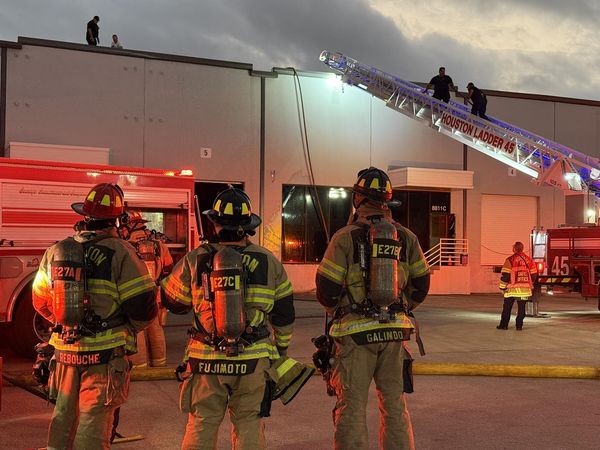
“Life is like a box of chocolates,” said Forrest Gump, who had clearly never looked at the label descriptions on the box. “You never know what you’re gonna get.” And so it was for the RBA on Tuesday when they announced that it was keeping the cash rate steady at 4.1%.
Not the actual decision – we all knew they were not going to cut rates. The market on Tuesday morning rated it about a 10% chance but no one was about to go bet their mortgage on it happening. No, the uncertainty was all about what was in the Reserve Bank’s statement and what they think is about to come next.
Uncertainty. The RBA is filled to the brim with it. At this point our central bank is unwilling to let us know whether the next couple of months will deliver a superb caramel swirl or instead we will be left with the unloved Turkish delight.
Consider these two sentences from the RBA’s statement: “There is a risk that any pick-up in consumption is slower than expected, resulting in continued subdued output growth and a sharper deterioration in the labour market than currently expected. Alternatively, labour market outcomes may prove stronger than expected, given the signal from a range of leading indicators.”
For those with little exposure to central bank speak this means: “Things might be worse than we expect. Alternatively, they might be better.”
They could have just done the shrug emoji and saved some words, but I guess doing that would have made people think they have no idea what is happening.
And so, there was no rate cute. Please don’t think they didn’t cut rates because they didn’t want to look political in the first week of an election campaign. Heaven forfend!
As the governor of the RBA, Michele Bullock told reporters: “It certainly didn’t factor into my thinking and it was never even mentioned at the board. The focus very much is on the data, the information, what we think is best for trying to get inflation back down to levels.”
OK, well let’s look at the data and those “levels”.
Last week the monthly inflation figures were released showing annual inflation in February rose 2.4% – the seventh month in a row of within the RBA’s target band of 2% to 3%.
If the graph does not display, click here
The monthly figures don’t count as many things as does the more “official” quarterly figures, but we now have three months in a row of the underlying inflation measure of the “trimmed mean” (which tops and tails the biggest 15% rises and falls) also being between the 2% and 3% range.
Is that not “back down to levels”?
OK maybe we should wait for the March quarter CPI figures that come out at the end of the month.
But here’s the thing about the next lot of “official figures” from March – they will very likely show lower inflation than the current rate of 2.4%.
Think of it this way: each “annual inflation” is a sum of four quarters. So that means that, every three months, one quarter gets dropped (ie the March 2024 quarter) and a new quarter gets counted (the March 2025 quarter). If the new quarter has lower inflation than the one that was dropped, then annual inflation will fall (or vice versa).
The March 2024 quarter was pretty high – about 1.0% inflation growth in that quarter alone. That’s a level of inflation consistent with 4.0% annual growth, not the 2.4% growth we currently have.
If the graph does not display, click here
So, if the March 2025 quarter has lower inflation growth than the March 2024 quarter, inflation will be lower, the trimmed mean will be below 3.0%.
My Australia Institute colleague Matt Grudnoff calculated that if prices in the March quarter rise by just 0.5% – a not unusual increase – then the official annual CPI will be just 1.96%. That would mean inflation will no longer be within the RBA’s target range – it will be below it.
I am not predicting that will happen but such an outcome would not be a shock. And yet the RBA remains of the view that when it comes to inflation rising or falling there are “nevertheless risks on both sides and the Board is cautious about the outlook”.
Caution is fine but indolence in the face of a challenging world is not.
Right now, of course, is the perfect time to plead uncertainty and abstain from doing anything. We are all waiting to see what Trump is going to do with tariffs. Is he going to put a 15% tariff on everyone and everything?
Who can say – it’s a head or tails proposition.
No one really has a clue because logic exited the building many years ago and Trump has been skating by for a good 40 years on assuming if the worst occurs he’ll just get away with whatever mistakes he has made. (This I should add has, alas, proved a correct assumption.)
Around the world there is more uncertainty regarding economic policy than during the GFC, Brexit, Trump’s first term or Covid.
If the graph does not display, click here
But we know even if Trump puts tariffs on everything, it will not raise prices here – because Americans, not Australians, will be the ones paying higher prices for Australian goods.
We might pay a bit more for any goods made in the US that also rely on imports from other countries – but that will be pretty muted.
And nothing the RBA does with interest rates will affect that.
Prices will rise because of a decision by Trump – interest rate rises in Australia do not affect that.
So we wait till the middle of May, after the election, when the RBA will read the label of the chocolate box, note that inflation has continued to stay within the 2% to 3% target, and they will likely cut rates.
• Greg Jericho is a Guardian Australia columnist and policy director at the Centre for Future Work







